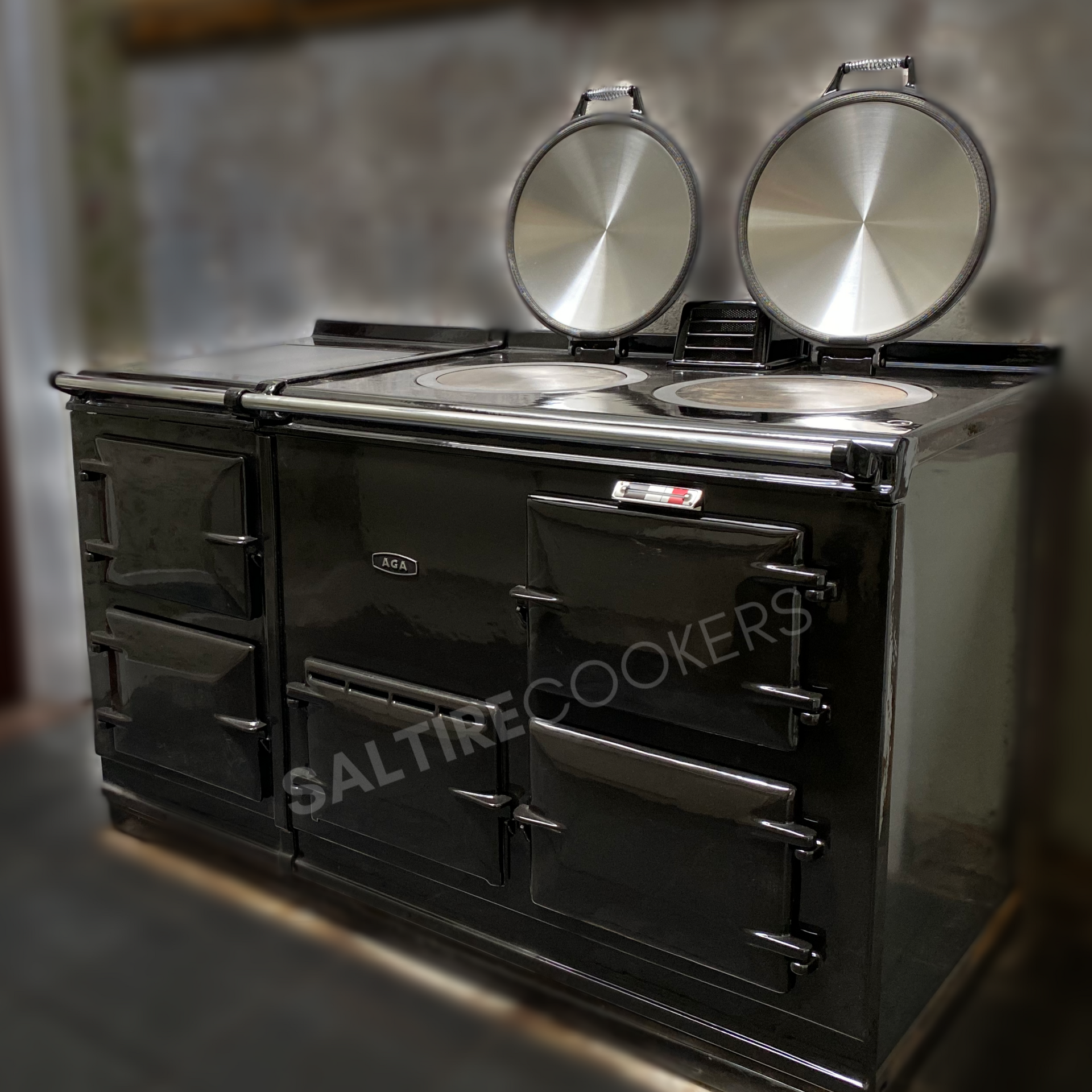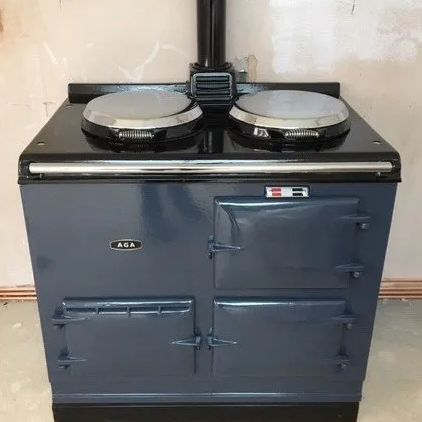Our Oil Aga Cookers
TRADITIONAL COOKING. AMBIENT WARMTH. ALWAYS ON.
Refurbished Oil Aga Cookers are still popular throughout Scotland, especially in those more rural areas. Designed to be always on and ready to use, it gives you the traditional aga cooker experience with lots of welcoming warmth into the room.
Why Choose a Refurbished Oil Aga Cooker?
A traditional aga cooker, with the legendary cooking experience.
The main reasons our clients choose an oil aga cooker, is rural living. We often install these models in remote locations that benefit from having an Aga Cooker for cooking, drying, boiling kettles - but doesn't totally rely on electricity to function. These models make power outages much easier to bare!
Some Benefits of Our Refurbished Oil Aga Cookers include:
- Designed to be always on 24/7.
- Traditional radiant heat cooking aga cookers are known for.
- Lots of ambient heat into the room.
- Original British cast iron - designed to last.
- Originally made of up to 70% recycled cast iron parts.
All of our Reconditioned Aga Cookers are restored by hand, using techniques passed down generations in our family.
Oil Aga Cookers - Models Available
Each aga cooker is different and temperatures will fluctuate but you can use the below approximations as a guide. Remember, with traditional aga cookers, the oven temperature will drop if you use the hotplates at the same time. Our controllable conversions won't have this problem.

- LH Hotplate: Boiling
- RH Hotplate: Simmering
- Top RH Oven: Roasting
- Bottom RH Oven: Simmering

- LH Hotplate: Boiling
- RH Hotplate: Simmering
- Top RH Oven: Roasting
- Bottom RH Oven: Baking
- Top LH Oven: Simmering
- Bottom LH Oven: Warming
- Warming Plate: Warming
Oil Aga Cookers - Dimensions
Our Refurbished Aga Cookers all have the same dimensions, listed below.
Pre-Installation Requirements: No utilities should be located behind the Aga Cooker. Some minimum clearance gaps are required for airflow and maintenance - 10mm gap behind and 3mm each side. FireBoard behind the cooker is less of an issue due to increased insulation and decreased surface temperature, but it is still recommended. The cooker should sit on a non-combustible surface, for a thickness of at least 12mm.
This is a summary. Our unique, full pre-installation guides will be provided for you and your engineer(s).

2 and 3 Oven Oil Aga Cookers
Width: 987mm (plus 3 to 5mm gap each side)
Depth: 679mm (plus 10mm gap behind)
Height: 851mm (plus your chosen plinth height)
Traditional models have the minimum depth 670mm.
Total height for lid clearance: 1330mm (plus any plinth height).
The doors need a minimum clearance of 116mm but we recommend 150mm.

4 Oven Oil Aga Cookers
Width: 1487mm (plus 3 to 5mm gap each side)
Depth: 679mm (plus 10mm gap behind)
Height: 851mm (plus your chosen plinth height)
Traditional models have the minimum depth 670mm.
Total height for lid clearance: 1330mm (plus any plinth height).
The doors need a minimum clearance of 116mm but we recommend 150mm.
Our plinths are made from steel. They are black in colour and available in 50-80mm high, but 60mm is the norm.
Oil Aga Cookers - Pros and Cons
To help you decide on your Aga Range Cooker fuel type, we've listed some advantages and disadvantages to our Oil Aga Cookers.
Advantages of Oil Aga Cookers:
- Traditional Aga Range cooking style.
- Always on and ready to use.
- Thermostatically controlled, with automatic heat recovery provided as standard.
- Lots of ambient warmth into the room.
- Ability to operate in electric outages.
- Cooking smells are extracted through the flue.
Disadvantages of Oil Aga Cookers:
- Reliant on Fossil Fuels.
- Cooking on the hotplates will reduce oven temperature.
- Designed to be on 24/7 - doesn't work well with being turned on and off.
- Ambient Heat may be unbearable in hotter months.
- Long heat-up times (around 7 hours from cold).
- Fuel line setup costs to adhere to regulations.
- Lined chimney or twin walled flue system is required.
- Servicing is mandatory (An engineer visit 6 months).
- Oil smells into the house with high winds or after relighting.
- Running costs are reliant on constantly fluctuating oil prices.
- You must have a reliable, experienced aga service engineer.
- Can be very temperamental with ANY changes in oil quality, filters or windy weather.
- Oil tank is recommended to always be above 25% full before delivery of new oil, to prevent relighting issues.
Oil Aga Cooker Flue Requirements
Our Oil Models can be installed with an existing chimney, or a twin-walled flue system.
Full flue specifications, diagrams etc are included inside our pre-install documentation.
Conventional Chimney Flue.
If you have an existing chimney or fireplace where the Aga cooker is situated, you can line the chimney to use your oil aga cooker. This can connect to the back of the aga cooker flue, so no flue pipe is visible inside the room, or you can choose a 'top flue', where a black enamel flue pipe exits the top of the cooker then connects onto the flue system further up, into the wall.
Twin Walled System.
You can also choose a twin-walled system if there is no existing chimney. The twin-walled system is basically a fabricated metal flue, strapped to the outside of the exterior wall, stretching to 600mm clearance of the main house ridge and any other obstructions.
Oil flue pipes must be at least 5m in length. This minimum requirement might be longer if you have bends in the flue system. The total flue height must clear the house ridge and any obstructions by 600mm. All bends should be kept to a 45 degree maximum.
Oil Aga Cookers - Running Costs
As always, running costs will depend on usage, food cooked, and your fuel supplier prices.
Since fuel costs can spike and dip, we've given approximations in kWh and Litres.
OIL RUNNING COSTS (p/w)
2 Ovens: 40 Litres
3 Ovens: not available in oil
4 Ovens: approx 51 Litres
You'll also have servicing costs to account for. Oil Aga Cookers need a minimum of one service (approx £180) every 6 months.
Why Choose Saltire Cookers for your Oil Aga Cooker?
We are Experienced
Our family have over 40 years of combined history working with Aga Cookers.
Unbiased Advice
We offer a range of systems and fuel types, so you can trust us to be impartial.
Our Warranty
Every Refurbished Aga Cooker is supplied with it's own parts warranty for peace of mind.
A Proper Family Business
We're a team of 5 and we are all related! We are purely owned and operated by our family of engineers.
How Much Do Oil Aga Cookers Cost?
Our cookers are all refurbished to order, using our high standard process.and enamelled in your chosen colour.
Before discontinuation, the RRP of a brand new model was £9135 plus delivery/install (and a limited colour selection)!
Save thousands on our refurbished models.
Our Traditional Oil and Gas Refurbished Aga Cookers are supplied ex-works.
They can be assembled and commissioned onsite by your independent aga-trained engineer.







